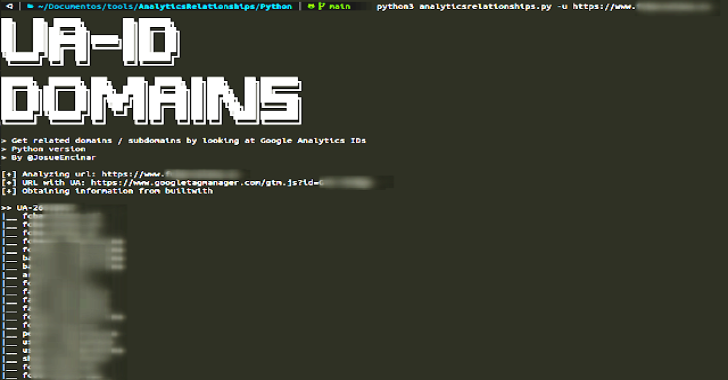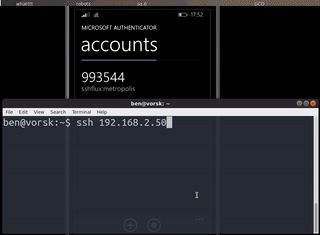AnalyticsRelationships is a tool to Get Related Domains / Subdomains By Looking At Google Analytics IDs.
██╗ ██╗ █████╗ ██╗██████╗
██║ ██║██╔══██╗ ██║██╔══██╗
██║ ██║███████║█████╗██║██║ ██║
██║ ██║██╔══██║╚════╝██║██║ ██║
╚██████╔╝██║ ██║ ██║██████╔╝
╚═════╝ ╚═╝ ╚═╝ ╚═╝╚═════╝
██████╗ ██████╗ ███╗ ███╗ █████╗ ██╗███╗ ██╗███████╗
██╔══██╗██╔═══██╗████╗ ████║██╔══██╗██║████╗ ██║██╔════╝
██║ ██║██║ ██║██╔████╔██║███████║██║██╔██╗ ██║███████╗
██║ ██║██║ ██║██║╚██╔╝██║██╔══██║██║██║╚██╗██║╚════██║
██████╔╝╚██████╔╝██║ ╚═╝ ██║██║ ██║██║██║ ╚████║███████║
╚═════╝ ╚═════╝ ╚═╝ ╚═╝╚═╝ ╚═╝╚═╝╚═╝ ╚═══╝╚══════╝
> Get related domains / subdomains by looking at Google Analytics IDs
> Python/GO versions
> By @JosueEncinarThis script try to get related domains / subdomains by looking at Google Analytics IDs from a URL. First search for ID of Google Analytics in the webpage and then request to builtwith and hackertarget with the ID.
Note: It does not work with all websites.It is searched by the following expressions:
-> “www.googletagmanager.com/ns.html\?id=[A-Z0-9-]+”
-> GTM-[A-Z0-9]+
-> “UA-\d+-\d+”
Available versions
Installation
Installation according to language.
Python
>git clone https://github.com/Josue87/AnalyticsRelationships.git
>cd AnalyticsRelationships/Python
>sudo pip3 install -r requirements.txt
GO
>git clone https://github.com/Josue87/AnalyticsRelationships.git
>cd AnalyticsRelationships/GO
>go build -ldflags “-s -w”
Docker
>git clone https://github.com/Josue87/AnalyticsRelationships.git
>cd AnalyticsRelationships
>docker build -t analyticsrelationships:latest .
Usage
Usage according to language
Python
>python3 analyticsrelationships.py -u https://www.example.com
Or redirect output to a file (banner or information messages are sent to the error output):
>python3 analyticsrelationships.py -u https://www.example.com > /tmp/example.txt
GO
>./analyticsrelationships –url https://www.example.com
Or redirect output to a file (banner or information messages are sent to the error output):
>./analyticsrelationships –url https://www.example.com > /tmp/example.txt
Docker
>docker run -it analyticsrelationships:latest https://www.example.com
Or redirect output to a file (banner or information messages are sent to the error output):
>docker run -it analyticsrelationships:latest https://www.example.com > /tmp/example.txt
Examples
Python
Output redirection to file /tmp/example.txt:

Without redirection

GO
Without redirection:

Working with file redirection works just like in Python.

















